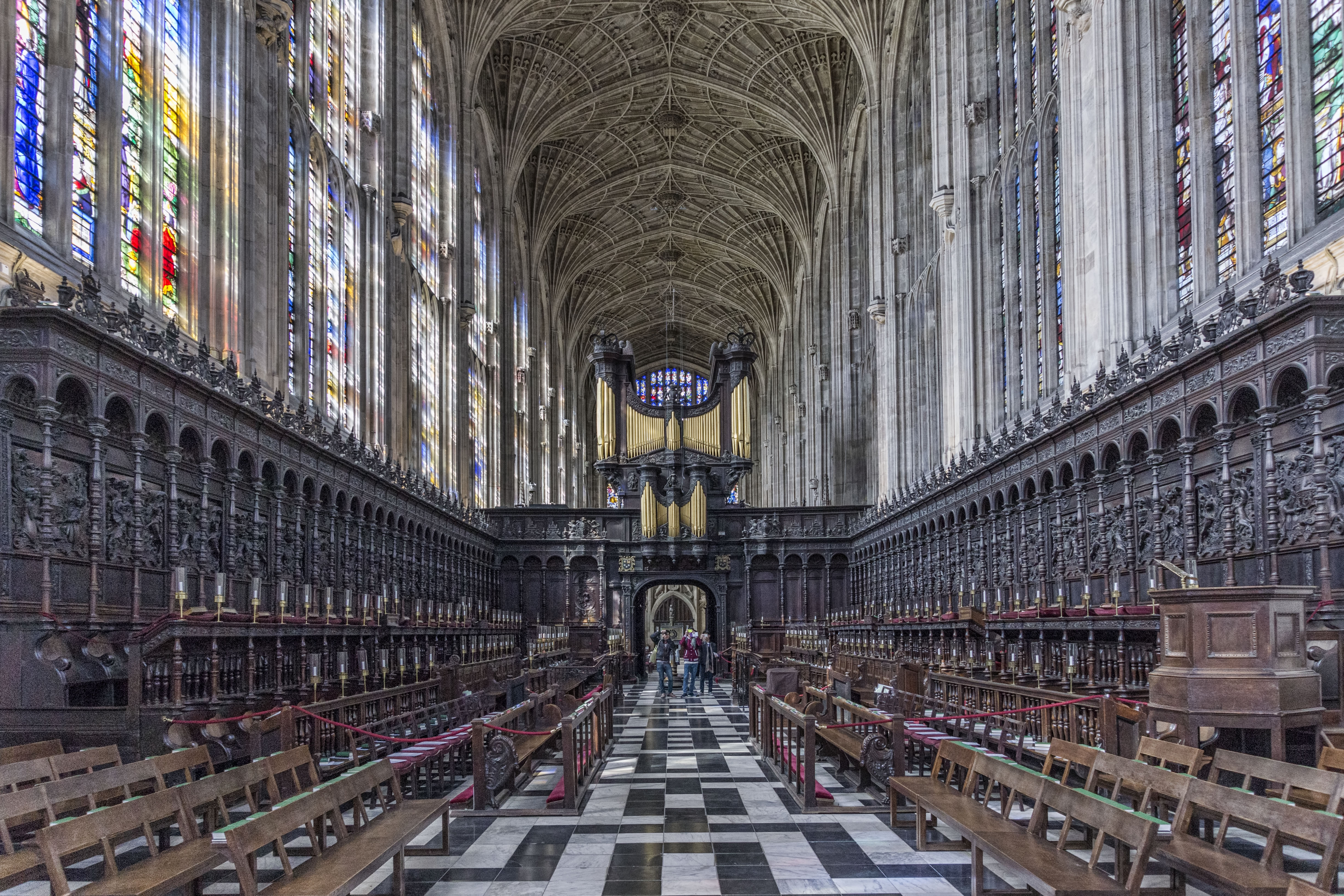|
Magnificat (Pärt)
Arvo Pärt set the Latin text of the Magnificat canticle in 1989. It is a composition for five-part choir ( SSATB) a cappella, with several divided parts. Its performance time is approximately seven minutes. The composition is in tintinnabuli style, a style which Pärt had invented in the mid-1970s. Composition Stylistic aspects Tintinnabulation is the most important aspect of Pärt's Magnificat. According to Pärt's biographer and friend Paul Hillier, the Magnificat "displays the tintinnabuli technique at its most supple and refined." Pärt also uses drones; a second-line G in the alto near the end of the piece, as well as the third-space C (on which the soprano solo line always stays) which provides a tonal center for the piece. Hillier says that "many pieces y Pärttend through length and repetition to establish a sense of timelessness or a continual present; the use of drones (which are in a sense a continuous repetition) reinforces this effect." Arvo Pärt's wife Nor ... [...More Info...] [...Related Items...] OR: [Wikipedia] [Google] [Baidu] |
Arvo Pärt
Arvo Pärt (; born 11 September 1935) is an Estonian composer of contemporary classical music. Since the late 1970s, Pärt has worked in a minimalist style that employs tintinnabuli, a compositional technique he invented. Pärt's music is in part inspired by Gregorian chant. His most performed works include ''Fratres'' (1977), ''Spiegel im Spiegel'' (1978), and ''Für Alina'' (1976). From 2011 to 2018, Pärt was the most performed living composer in the world, and the second most performed in 2019—after John Williams. The Arvo Pärt Centre, in Laulasmaa, was opened to the public in 2018. Early life, family and education Pärt was born in Paide, Järva County, Estonia, and was raised by his mother and stepfather in Rakvere in northern Estonia. He began to experiment with the top and bottom notes of the family's piano as the middle register was damaged. Pärt's musical education began at the age of seven when he began attending music school in Rakvere. By his early teenage ye ... [...More Info...] [...Related Items...] OR: [Wikipedia] [Google] [Baidu] |
Incipit
The incipit () of a text is the first few words of the text, employed as an identifying label. In a musical composition, an incipit is an initial sequence of notes, having the same purpose. The word ''incipit'' comes from Latin and means "it begins". Its counterpart taken from the ending of the text is the explicit. Before the development of titles, texts were often referred to by their incipits, as with for example ''Agnus Dei''. During the medieval period in Europe, incipits were often written in a different script or colour from the rest of the work of which they were a part, and "incipit pages" might be heavily decorated with illumination. Though the word ''incipit'' is Latin, the practice of the incipit predates classical antiquity by several millennia and can be found in various parts of the world. Although not always called by the name of ''incipit'' today, the practice of referring to texts by their initial words remains commonplace. Historical examples Sumerian In th ... [...More Info...] [...Related Items...] OR: [Wikipedia] [Google] [Baidu] |
1989 Compositions
File:1989 Events Collage.png, From left, clockwise: The Cypress Street Viaduct, Cypress structure collapses as a result of the 1989 Loma Prieta earthquake, killing motorists below; The proposal document for the World Wide Web is submitted; The Exxon Valdez oil tanker runs aground in Prince William Sound, Alaska, causing a large Exxon Valdez oil spill, oil spill; The Fall of the Berlin Wall begins the downfall of Communism in Eastern Europe, and heralds German reunification; The United States United States invasion of Panama, invades Panama to depose Manuel Noriega; The Singing Revolution led to the independence of the Baltic states of Estonia, Latvia, and Lithuania from the Soviet Union; The stands of Hillsborough Stadium in Sheffield, Yorkshire, where the Hillsborough disaster occurred; 1989 Tiananmen Square protests and massacre, Students demonstrate in Tiananmen Square, Beijing; many are killed by forces of the Chinese Communist Party., 300x300px, thumb rect 0 0 200 200 1989 Loma ... [...More Info...] [...Related Items...] OR: [Wikipedia] [Google] [Baidu] |
Compositions By Arvo Pärt
Composition or Compositions may refer to: Arts and literature * Composition (dance), practice and teaching of choreography *Composition (language), in literature and rhetoric, producing a work in spoken tradition and written discourse, to include visuals and digital space *Composition (music), an original piece of music and its creation * Composition (visual arts), the plan, placement or arrangement of the elements of art in a work * ''Composition'' (Peeters), a 1921 painting by Jozef Peeters * Composition studies, the professional field of writing instruction * ''Compositions'' (album), an album by Anita Baker * Digital compositing, the practice of digitally piecing together a video Computer science * Function composition (computer science), an act or mechanism to combine simple functions to build more complicated ones *Object composition, combining simpler data types into more complex data types, or function calls into calling functions History * Composition of 1867, Austro-Hung ... [...More Info...] [...Related Items...] OR: [Wikipedia] [Google] [Baidu] |
Theatre Of Voices
Theatre of Voices is a vocal ensemble founded by baritone Paul Hillier in 1990; . Retrieved March 9, 2012. it focuses on early music and . The ensemble was formed by while he was teaching at the , as an avenue to performing more contemporary music while his other group, t ... [...More Info...] [...Related Items...] OR: [Wikipedia] [Google] [Baidu] |
Stephen Cleobury
Sir Stephen John Cleobury ( ; 31 December 1948 – 22 November 2019)Sir Stephen Cleobury: Former King's College choir conductor dies aged 70 23 November 2019 was an English and . He worked with the |
Choir Of King's College, Cambridge
The Choir of King's College, Cambridge is an English Anglican choir. It is considered one of today's most accomplished and renowned representatives of the great English choral tradition. It was created by King Henry VI, who founded King's College, Cambridge, in 1441, to provide daily singing in his Chapel, which remains the main task of the choir to this day. Today the choir is directed by Daniel Hyde and derives much of its fame from the Festival of Nine Lessons and Carols, broadcast worldwide to millions on Christmas Eve every year, and the TV service Carols from King's which accompanies it. The choir commissions a carol from a contemporary composer for each year's festival. History Early history The original statutes specified that the choir should consist of ten chaplains, six clerks (lay singers) and sixteen choristers who were to be "poor and needy boys, of sound condition and honest conversation ... knowing competently how to read and sing". Perhaps recognising the wor ... [...More Info...] [...Related Items...] OR: [Wikipedia] [Google] [Baidu] |
Andrew Parrott
Andrew Parrott (born 10 March 1947) is a British conductor, perhaps best known for his pioneering "historically informed performances" of pre-classical music. He conducts a wide range of repertoire, including contemporary music. He conducted the premiere of Judith Weir's ''A Night at the Chinese Opera'' (as well as its first recording). He has also recorded new music by other modern British composers (including John Tavener), and by Vladimír Godár. In 1973 he founded the Taverner Choir, Consort and Players, a "period instruments" ensemble based in London. Towards the end of 1973 he began conducting the early music group Musica Reservata, also based in London, after John Beckett left. He was music director of the London Mozart Players for several years until September 2006. From 2001 to 2010 Parrott was music director of the New York Collegium in New York City, New York. Parrott has published several articles on Bach, Monteverdi and Purcell, is co-editor of the ''New Oxford ... [...More Info...] [...Related Items...] OR: [Wikipedia] [Google] [Baidu] |
Tõnu Kaljuste
Tõnu Kaljuste (born August 28, 1953) is an Estonian conductor. Born in Tallinn, Kaljuste is the son of Heino Kaljuste (1925–1989), an Estonian choral conductor, and Lia Kaljuste, a radio journalist. Tõnu sang in his father's choirs as a child, and graduated from the Tallinn Music High School (''Tallinna Muusikakeskkool'') in 1971. He completed a graduate degree at the Tallinn Conservatory in 1976, studying with Jüri Variste and Roman Matsov, and continued as a postgraduate at the Leningrad Conservatory until 1978. Kaljuste took his father's role as leader of the Ellerhein Chamber choir in 1974, an ensemble that performed choral works ranging from Renaissance music to contemporary avant-garde music. He was professor of choral conducting at the Tallinn Conservatory from 1978 to 1980, and won the Best Conductor prize at the 1980 Béla Bartók International Choral Competition. With financial support from the Estonian government, Kaljuste turned the Ellerhein Chamber Choir into ... [...More Info...] [...Related Items...] OR: [Wikipedia] [Google] [Baidu] |
Estonian Philharmonic Chamber Choir
Estonian Philharmonic Chamber Choir (EPCC) is a professional choir based in Estonia. It was founded in 1981 by Tõnu Kaljuste, who was its conductor for twenty years. In 2001, Paul Hillier followed Kaljuste's tenure, becoming the EPCC's principal conductor and artistic director until September 2008, when Daniel Reuss took over the task. Since 2014 the choir's principal conductor has been Kaspars Putniņš. The repertoire of the EPCC ranges from Gregorian Chant to modern works, particularly those of the Estonian composers Arvo Pärt and Veljo Tormis. The group has been nominated for numerous Grammy Awards, and has won the Grammy Award for Best Choral Performance twice: in 2007 with Arvo Pärt's ''Da pacem'' and in 2014 with Pärt's ''Adam's Lament'', the latter was shared with Tui Hirv & Rainer Vilu, Sinfonietta Riga & Tallinn Chamber Orchestra; Latvian Radio Choir & Vox Clamantis. In 2018 Estonian Philharmonic Chamber Choir won the prestigious Gramophone Award with its recording ... [...More Info...] [...Related Items...] OR: [Wikipedia] [Google] [Baidu] |
Universal Edition
Universal Edition (UE) is a classical music publishing firm. Founded in 1901 in Vienna, they originally intended to provide the core classical works and educational works to the Austrian market (which had until then been dominated by Leipzig-based publishers). The firm soon expanded to become one of the most important publishers of modern music. History In 1904, UE acquired Aibl publishers, and so acquired the rights to works by Richard Strauss, Max Reger, and other composers, but it was the arrival of Emil Hertzka as managing director in 1907 (who remained until his death in 1932) which really pushed the firm towards new music. Under Hertzka, UE signed contracts with a number of important contemporary composers, including Béla Bartók and Frederick Delius in 1908; Gustav Mahler and Arnold Schoenberg in 1909 (Mahler's '' Symphony No. 8'' was the first work UE acquired an original copyright to); Anton Webern and Alexander von Zemlinsky in 1910; Karol Szymanowski in 1912; Leoš J ... [...More Info...] [...Related Items...] OR: [Wikipedia] [Google] [Baidu] |
Homophony
In music, homophony (;, Greek: ὁμόφωνος, ''homóphōnos'', from ὁμός, ''homós'', "same" and φωνή, ''phōnē'', "sound, tone") is a texture in which a primary part is supported by one or more additional strands that flesh out the harmony. One melody predominates while the other parts play either single notes or an elaborate accompaniment. This differentiation of roles contrasts with equal-voice polyphony (in which similar lines move with rhythmic and melodic independence to form an even texture) and monophony (in which all parts move in unison or octaves). Historically, homophony and its differentiated roles for parts emerged in tandem with tonality, which gave distinct harmonic functions to the soprano, bass and inner voices. A homophonic texture may be homorhythmic, which means that all parts have the same rhythm. Chorale texture is another variant of homophony. The most common type of homophony is melody-dominated homophony, in which one voice, often the ... [...More Info...] [...Related Items...] OR: [Wikipedia] [Google] [Baidu] |

.jpg)

.jpg)





